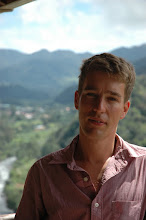The Last Country
It's rather a sad thought to think that Venezuela is my final country on this fourteen-month oddessey. It's number 39 if you don't include a few random plane changes in places as far ranging as Switzerland, Quatar and Equitorial Guinea, and also if you take the 'de facto' approach of not counting Tibet as a country in its own right. Anyway, it's been quite a journey.
And I'm not unhappy to make Venezuela the final stop. It's a vibrant, bustling country with bags of personality and a style that seems to mark it out from its Latin American neighbours. The leisured, slow lane life of colonial Cartagena, in Colombia, couldn't be more different to the lively atmosphere of the Andean city of Merida. This place has more extreme outdoor pursuits going down than you could do in a week, as well as the World's longest and highest cable car, taking you up to a nearby peak at 4,765m. It's a cool trip if a little relaxed in the safety department - the doors didn't quite shut in one of the cars and the maximum passenger load limit seemed to be more an aspiration than a regulation. It was freezing on the top with only about 10 metres visibility after the first snowfall of the year, but it was exhilarating to ride up into the clouds all the same. Mind you, I'm not sure the American tourist who went up in t-shirt and flip flops was quite so enthusiastic.
Venezuela has quite a few interesting quirks aside from its well known fondness for beauty contests - it's won more than any other nation, though I haven't encountered that many goddesses on my travels in the country so far. Perhaps that will change when I reach the beach! Taxis and many private cars here are enormous American gas-guzzlers, universally painted white it seems and normally looking like they've been on the road a good twenty to thirty years. I guess they can afford the fuel but not the new motors, though President Hugo Chavez's unilateral campaign against the USA, and all it stands for, doesn't exactly facilitate the flow of US imports. At night the local youths of the city like to hang out in these battered vehicles beside the main park with the car doors and trunks flung open as they blast latino music out at the world at large. It's all very friendly if a little difficult to sleep at times.

